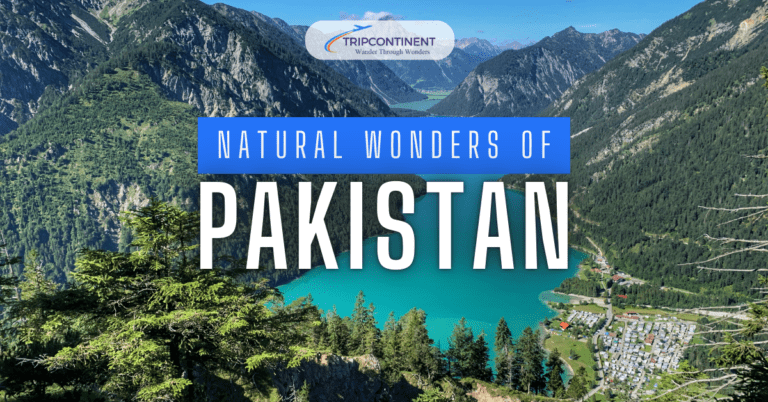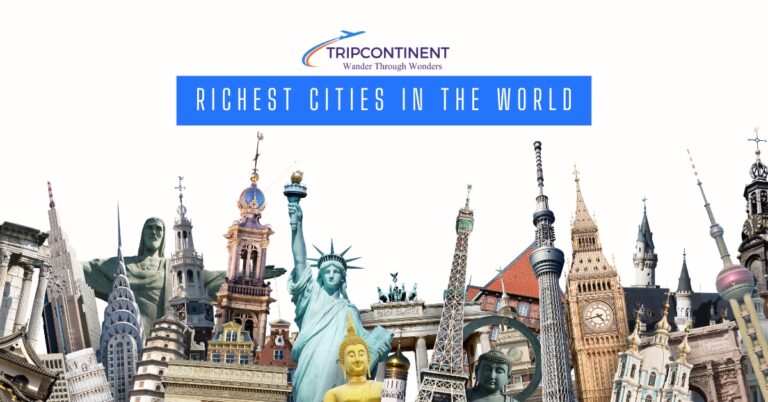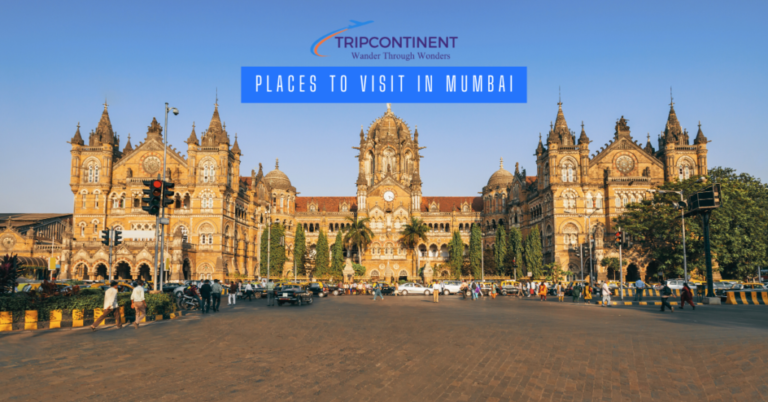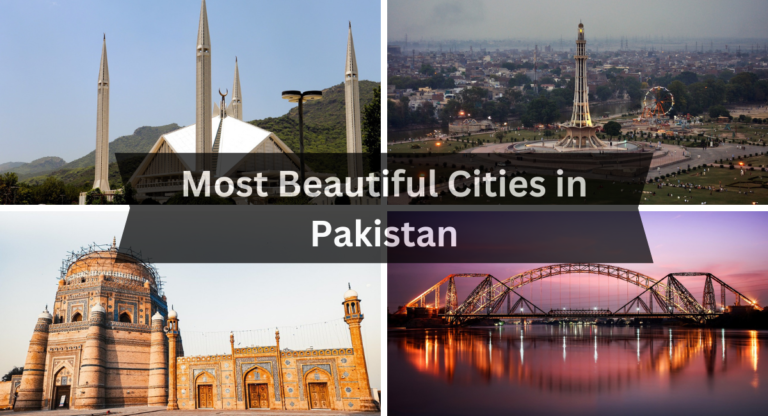Why Is Russia So Big With Little Population?
Russia, one of the largest countries on Earth, has an impressive expanse that spans both Asia and Europe, covering an estimated 17.1 million square kilometers. This immense territory, with its diverse landscapes ranging from the icy tundras of Siberia to the bustling cities of Moscow and Saint Petersburg, is enough to awaken anyone’s curiosity. Yet, what often leaves onlookers perplexed is the stark contrast between Russia’s colossal landmass and its relatively small population, especially when compared to other populous nations. Despite being the ninth most populous country globally, with around 146 million people, Russia’s population density is remarkably low.
In this blog, we delve into the intriguing reasons behind this phenomenon, exploring why is Russia so big with little population. From the harsh climates of its northern regions to the historical policies that influenced settlement patterns, we will uncover the multifaceted reasons behind Russia’s low population. By examining the geographical impact and political reasoning, we aim to provide a comprehensive understanding of why Russia, a land of such a monumental scale, remains so sparsely populated.
Let’s begin by exploring Russia’s historical background.
A Historical Overview
Russia’s vast territory and relatively low population density can be traced back to centuries of territorial expansion and demographic shifts. The origins of modern Russia began with the principality of Muscovy in the Middle Ages. This principality laid the groundwork for the eventual Russian Empire as it grew in power and influence. Through military conquests and strategic acquisitions, Russia expanded its frontiers eastward, westward, and southward, assimilating nearby territories and numerous ethnic groups.
A key component of Russia’s territorial expansion was the annexation of Siberia, a large and sparsely populated region. In the 16th century, Cossack traders and explorers initiated the exploration and settlement of Siberia, adding vast tracts of land and valuable fur resources to the Russian domain. However, Siberia’s harsh climate, rugged terrain, and the nomadic lifestyle of its indigenous peoples kept its population density low.
The Ural Mountains, often considered the dividing line between Europe and Asia, played a significant role in shaping Russia’s geography. While the western part of Russia includes major cities like Moscow and Saint Petersburg, the vast expanses of Siberia and the Far East present a stark contrast. This geographic diversity created significant challenges for connectivity and the establishment of a centralized government.
During the imperial era, particularly under Peter the Great, Russia underwent significant modernization and westernization. The Russian Empire expanded into the Baltic region, increasing its size. However, population concentration remained in certain areas, and the empire’s sheer vastness posed governance challenges.
Historical events such as the Mongol invasion in the 13th century caused depopulation and altered settlement patterns, increasing demographic imbalances. Additionally, social upheavals, famines, and numerous wars led to fluctuations in population growth.
In the Soviet era, efforts to modernize and industrialize the country often came at the expense of the rural population. Policies such as the collectivization of farmland and the forced relocation of people to industrial centers significantly altered settlement patterns but did not fully address the challenges of population distribution across the vast Soviet territory.
In the post-Soviet era, Russia has faced demographic challenges such as a declining birth rate and migration from rural to urban areas. Economic disparities between regions persist, with a higher concentration of the population in the more developed western parts of the country.
Geographical Factors Influencing Russia’s Low Population
Russia’s vast landmass and diverse geography significantly impact its population distribution. This section explores the dimensions, extreme weather conditions, transportation networks, and economic imbalances that contribute to Russia’s low population density.
1. Enormous Territory and Geographic Diversity
Russia is the world’s largest country, covering both Asia and Europe. Covering 17.1 million square kilometers, it includes a variety of climatic zones such as steppes, taiga, tundra, and deserts. This immense size poses substantial challenges for resource distribution, infrastructure development, and transportation. The vast distances between regions make it difficult to establish cohesive economic networks and social services. As a result, many areas, particularly in Siberia and the Far East, remain sparsely populated due to their harsh climates, remote locations, and the difficulty of maintaining consistent connectivity with more developed regions.
2. Harsh Climate Conditions
A significant portion of Russia is characterized by extreme weather conditions, with some of the harshest winters on the planet. Siberia, for instance, is infamous for its subzero temperatures that can drop as low as -50 degrees Celsius. These frigid conditions make large-scale agriculture nearly impossible and create a challenging environment for sustained human habitation. The difficult terrain, coupled with long, severe winters, deters population growth and settlement in these regions. Consequently, the inhospitable climate contributes to the low population density, as people are naturally inclined to settle in more temperate and hospitable areas.
Explore More: Coldest Countries in the World
3. Transportation Networks and River Systems
Russia’s extensive river systems, including the Volga, Ob, and Lena rivers, have historically played a crucial role in facilitating trade and transportation. These rivers support the establishment of economically viable and more densely populated settlements along their banks. However, the vast expanses of land between these river systems, especially in Siberia and remote regions, hinder the development of significant urban centers. The lack of transportation infrastructure in these areas limits access to essential resources and services, amplifying isolation and discouraging large-scale habitation. Thus, while rivers help create hubs of activity, the intervening distances perpetuate low population densities.
Also Explore: 10 Largest Lakes in the United States
4. Economic Disparities
Economic activity in Russia is unevenly distributed and heavily influenced by the geographical distribution of natural resources. Regions abundant in minerals, oil, and gas, such as Western Siberia and the Ural Mountains, attract more population and economic development due to the job opportunities and economic benefits they offer. In contrast, areas with fewer natural resources, particularly in the Far East, face economic stagnation and population decline. The lack of economic prospects in these regions leads to insufficient infrastructure development and limited public services, further discouraging settlement. This economic imbalance reinforces the uneven population distribution, with people gravitating towards regions offering better economic opportunities.
Political Factors Influencing Russia’s Population Distribution
Russia’s demographic landscape has been profoundly shaped by the Soviet era’s industrialization and central planning policies, which dramatically altered population dynamics, urbanization, and settlement patterns across the country.
1. Urban Expansion and Industrial Development
During the Soviet era, particularly under Joseph Stalin, the government aggressively pursued rapid industrialization to transform the largely agrarian society into an economic powerhouse. This ambitious agenda led to the establishment of numerous industrial projects, significantly expanding existing cities and fostering the creation of new urban centers.
As industries flourished, millions of people migrated from rural areas to urban hubs such as Moscow, St. Petersburg, and other key cities, seeking employment in burgeoning factories and industrial enterprises. This migration resulted in substantial population increases in metropolitan areas, concentrating demographic growth and fostering urbanization. The shift from rural to urban living also reflected broader societal changes as people sought improved living standards and economic opportunities. These developments shaped the urban landscape, creating densely populated industrial regions while leaving vast rural areas sparsely inhabited.
2. Strategic Population Movements and Forced Relocation
Central planning under the Soviet regime necessitated the strategic allocation of labor to support massive industrial projects. This requirement led to the implementation of forced migration and relocation programs designed to ensure an adequate workforce for industrialization efforts. The Soviet government orchestrated large-scale movements of people from rural to urban and industrial areas, dramatically altering population distribution.
Forced migrations were often conducted with little regard for individual preferences, focusing instead on fulfilling economic goals. These relocations aimed to strategically place human resources where they were most needed, contributing to significant demographic changes. While essential for industrial growth, the forced migration policies disrupted traditional settlement patterns and imposed harsh conditions on many individuals, reflecting the authoritarian nature of Soviet central planning.
3. Development of Resource-Rich Regions
The Soviet government’s focus on exploiting natural resources led to the targeted development of regions rich in minerals, metals, and oil. This strategic emphasis resulted in the establishment of industrial complexes in resource-abundant areas, promoting population growth in these economically significant regions. Cities and towns located in resource-rich areas, such as the Ural Mountains and Western Siberia, became centers of industrial activity, attracting workers and fostering demographic concentration.
The influx of population into these regions was driven by the promise of employment and economic benefits associated with resource extraction and processing industries. However, this focus on resource-rich areas also contributed to regional economic disparities, as areas without valuable natural resources were often neglected, leading to uneven development and population distribution across the country.
4. Neglect of Rural and Peripheral Areas
While urban centers and industrial hubs thrived under Soviet industrialization policies, rural and peripheral areas were frequently overlooked. The central planning system prioritized urban and industrial development, leading to significant disparities in living standards and economic opportunities between urban and rural regions.
Rural inhabitants faced limited access to modern amenities, healthcare, education, and social services, which exacerbated demographic imbalances. This neglect of rural areas prompted many residents to migrate to cities in search of better living conditions and job prospects, further contributing to the depopulation of rural regions. The stark contrast in development between urban and rural areas underscored the broader socio-economic challenges faced by the Soviet Union and its successor states.
5. Demographic Shifts in Ethnic Republics
The Soviet Union’s composition included various republics with distinct ethnic groups, each with its own demographic characteristics. Central planning policies influenced population movements within these republics, sometimes leading to demographic imbalances and shifts. Economic policies enacted by the central government often resulted in changes in the ethnic composition and population distribution within these regions.
For instance, the development of industrial projects in certain republics attracted workers from different parts of the Soviet Union, altering the local demographic landscape. These shifts had significant social and cultural implications, as the influx of different ethnic groups impacted the traditional way of life and community structures in these regions. The demographic changes within ethnic republics reflected the broader complexities of Soviet central planning and its impact on population dynamics.
6. Educational and Employment Opportunities in Urban Centers
The Soviet emphasis on industrial growth created greater educational and employment opportunities, particularly in urban areas. The need for a skilled workforce in industrial sectors led to the enhancement of education and training programs, attracting younger generations to cities. Urban centers became hubs of educational institutions and employment opportunities, drawing people from rural areas seeking better prospects.
This migration contributed to the concentration of population in cities, shaping demographic trends. The availability of educational and employment opportunities in urban areas not only influenced individual life choices but also had broader socio-economic implications, driving urbanization and transforming the demographic landscape.
7. Infrastructure and Social Services Development
Substantial investments in infrastructure and social services in urban areas further encouraged population concentration in cities. The Soviet government prioritized the development of healthcare, education, transportation, and cultural amenities in urban centers, making these areas attractive to residents. The improved quality of life in cities, supported by better infrastructure and services, drew people from rural areas, leading to urban growth.
The focus on urban development created significant disparities between urban and rural regions, contributing to demographic imbalances. The investment in urban infrastructure and social services underscored the central planning priorities of the Soviet regime, shaping the population distribution and settlement patterns across the country.
Soviet industrialization and central planning facilitated significant demographic shifts, but they also had long-term consequences. The focus on heavy industries, environmental degradation, and neglect of certain regions left enduring disparities in Russia’s population distribution. The legacy of these policies continues to influence the demographic and economic landscape of modern Russia.
Russian Government’s Approach to Addressing Population Challenges
The Russian government is actively addressing its demographic challenges through a series of comprehensive measures, focusing on social, economic, and demographic policies aimed at promoting population growth and well-being.
1. Enhancing Family Support Services
One of the cornerstones of the government’s strategy is the enhancement of family support services. Recognizing the critical role of families in boosting population numbers, the government has introduced financial incentives to encourage couples to have more children. These incentives include tax breaks for families with multiple children, maternity capital programs, and direct financial subsidies. By alleviating the financial burdens associated with raising larger families, these measures aim to create a more favorable environment for population growth.
2. Improved Parental Leave Policies
In addition to financial incentives, the government has strengthened maternity and parental leave policies. Extended maternity leave and benefits for parents taking time off to care for their children not only support family stability but also ensure the well-being of children. These policies are designed to invest in the health and development of the next generation, thereby contributing to long-term population growth.
3. Advancing Healthcare Services
Healthcare initiatives form a critical part of the government’s efforts to improve population well-being. By enhancing healthcare services, particularly in rural and underpopulated areas, the government ensures that all citizens have access to quality medical care. Specific programs focusing on maternal and child health, along with broader healthcare improvements, are essential components of the demographic policy aimed at fostering a healthier population.
4. Investing in Education
Educational programs are another pillar of the government’s strategy to address population issues. Investments in education, aimed at raising standards and increasing accessibility across various regions, equip individuals with the knowledge and skills necessary for social and economic advancement. This long-term approach not only empowers people but also enhances community well-being, contributing to a more stable and prosperous society.
5. Regional Development Initiatives
To address regional population distribution imbalances, the Russian government has implemented regional development initiatives. These initiatives focus on investing in less populated areas by creating jobs and improving infrastructure. By enhancing living conditions and economic opportunities in these regions, the government aims to attract and retain residents, counteracting the effects of depopulation.
6. Economic Incentives for Businesses
Part of the government’s strategy involves offering financial incentives for businesses to operate and expand in depopulating areas. Tax breaks and other policies are being explored to boost local economies, create jobs, and encourage companies to establish operations in regions experiencing population decline. These incentives are designed to stimulate economic activity and attract a workforce to these areas.
Also Read: The Largest Cities in the US
Summing Up
In conclusion, we discussed why is Russia so big with little population. Russia’s vast size, combined with its relatively low population density, is a result of its challenging geography, extreme climate, and historical political decisions. The Soviet era’s industrialization policies significantly influenced urbanization and demographic distribution.
Today, the Russian government is addressing these issues through comprehensive family support, healthcare, education, and regional development initiatives to create a more balanced and thriving society. Understanding these factors provides a clearer picture of why Russia, despite its immense territory, maintains a comparatively small population.
FAQs
Why Is There No Population Growth in Russia?
Russia has experienced zero or negative population growth since 2000, meaning that deaths have consistently outnumbered births. In the past year, only 1.27 million babies were born, marking the lowest birth rate since 2000. This decline is reminiscent of the significant drop in birth rates during the 1990s following the dissolution of the Soviet Union. Factors such as economic instability, societal changes, and lingering effects of historical policies contribute to this ongoing demographic challenge.
Who Encompasses 80% of Russia’s Population?
Approximately 80% of Russia’s population is of Slavic descent, tracing their ancestry back to settlers who arrived in the region around 1,500 years ago. Other significant ethnic groups include the Tatars, who have roots dating back to the Mongol invasions, and Ukrainians. This diverse ethnic composition reflects Russia’s complex historical and cultural landscape.
Why Does Russia Have Such a Vast Territory?
Russia’s enormous territory is the outcome of centuries of geopolitical strategies, strategic acquisitions, and imperial expansion. Historical figures like Ivan the Terrible and Catherine the Great played pivotal roles in expanding the nation’s borders. Through military conquests, diplomacy, and colonization, these rulers significantly increased the land under Russian control, leading to the vast expanse that defines modern-day Russia. Their efforts, driven by a desire for power and resources, have left a lasting legacy of an extensive and diverse geographical area.
By 2050, How Many People Will Be Living in Russia?
Russia’s population is projected to decline in the coming decades. From 146 million people in 2020, it is expected to decrease to 143 million by 2030 and further drop to 136 million by 2050. This decline reflects ongoing demographic challenges, including low birth rates and high mortality rates, which continue to impact the country’s population growth.

I’m Sophia Jones, an adventurer at heart from New York City, USA. I live for travel and exploration, always eager to discover new places, meet fascinating people, and try out diverse cuisines. Over the past few years, I’ve traveled to numerous countries, immersing myself in different cultures and creating unforgettable memories.






